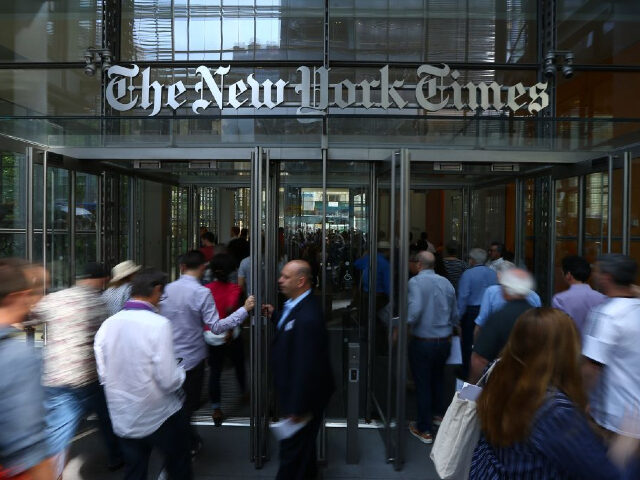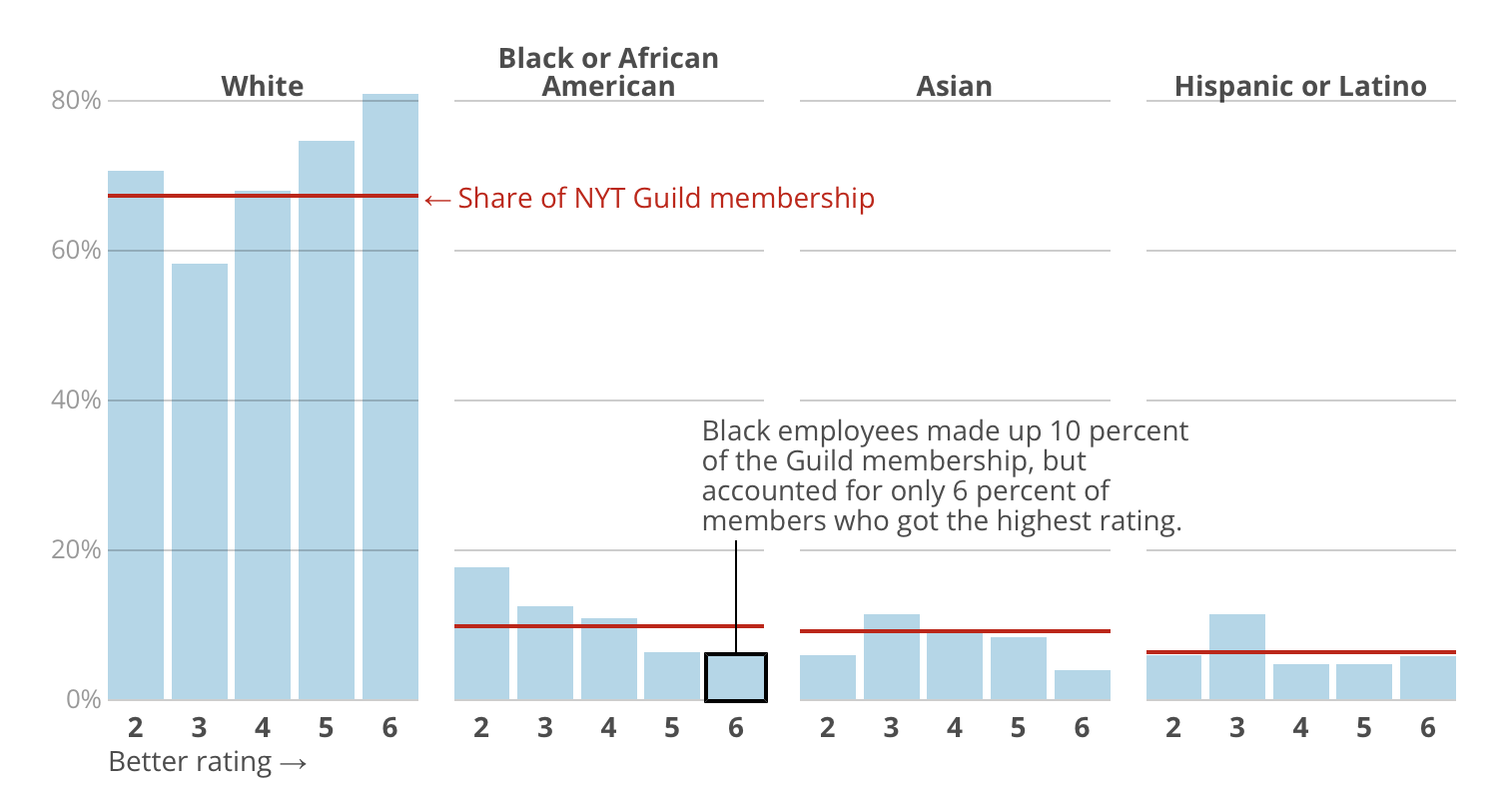Unionized New York Times journalists are accusing the paper of giving non-white employees lower job performance reviews compared to white employees.
The New York Times Guild, comprised of over 1,300 unionized journalists at the paper, published its accusations in a report on Tuesday.
Today, @nytimesguild is releasing a report on persistent racial disparities in performance evaluations at @nytimes.
For nearly 2 years, management has chosen to downplay the problem instead of addressing it.https://t.co/CHMWpuTpGL pic.twitter.com/LhM2SGzyuC
— NYTimesGuild (@NYTimesGuild) August 23, 2022
The union claimed that “white Guild members were more likely to get the top ratings, while Black and Hispanic members were more likely to get the lowest two ratings.”
According to the report:
In 2021, 32 percent of white Guild members received a rating in one of the top two categories, compared with 21 percent of Hispanic members and 18 percent of Black members. But only 25 percent of white members received one of the lowest two ratings, compared with 49 percent of Hispanic or Latino members and 36 percent of Black members.
Furthermore, the union alleges that in 2021, white employees were 47.2 percent more likely to receive a higher rating than Black employees, 61.2 percent more likely than Hispanic employees, and 34.2 percent more likely than Asian employees.
Data from the report shows that white employees in 2021 made up a significantly higher percentage of the guild membership compared to black, Hispanic, and Asian employees.
For its job performance reviews, the Times uses a six-tier rating system; however, only three people in the past three years have received the lowest rating. The guild acknowledged this in their report and noted that the ratings were “in effect, a five-tier system.”
Most employees who received higher job performance ratings received salary bonuses, the guild noted. For example, those who got a top rating received a 1.9 percent bonus while those who got a “meets expectations” rating received a 1.5 percent bonus.
The union claimed that minority guild members were most affected as most did not get bonuses due to more receiving lower performance scores.
Although the report highlighted many examples of “racial imbalance” in their findings, the guild did not provide a concrete explanation as to why it was happening.
“It is not clear whether the racial imbalance is a result of problems in the performance review system itself or whether that system is simply revealing barriers to success for employees of color at the company,” the guild admitted.
All findings in the report consist of job performance data from 2018 to 2021 that was provided to the guild by the paper. The data within the report only consisted of Guild members and not all Times employees.
The Times criticized the Guild for not giving the company adequate time to review the findings, as the union had only presented the report to them on August 17, the union noted. However, the paper did express to the Guild they were committed to “a performance evaluation system that is fair and equitable.”
The union, focused only on data from 2018 and 2019, also published a similar report in 2020, accusing the paper of racial disparities in how they conducted their performance reviews.
The Times responded to that report by analyzing the union’s findings and determined that while there were minimal disparities, there was no evidence of a systemic problem.
This is not the only current dispute between the Guild and the Times, as tensions are already high amid ongoing contract negotiations between the two parties, the New York Post recently reported. The last contract between the two ended in March 2021.
Even as the left-wing paper appears to be undergoing internal division with its employees regarding race, the paper has a history of publishing divisive racialized content.
As Breitbart News reported, the New York Times inflamed racial tensions in the nation through its publication of the 1619 Project, which gave a wildly inaccurate account of historical events in the United States involving race.
You can follow Ethan Letkeman on Twitter at @EthanLetkeman.


COMMENTS
Please let us know if you're having issues with commenting.